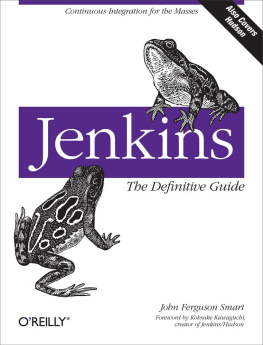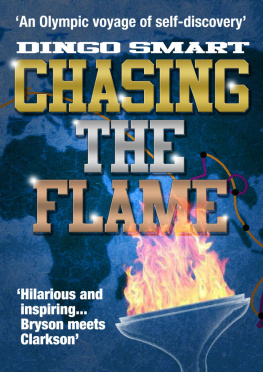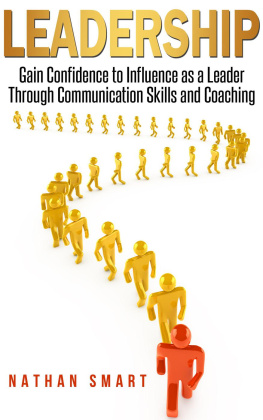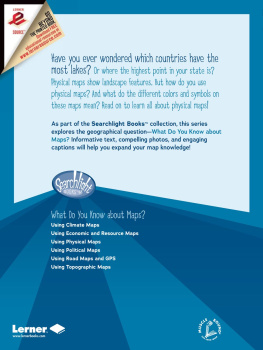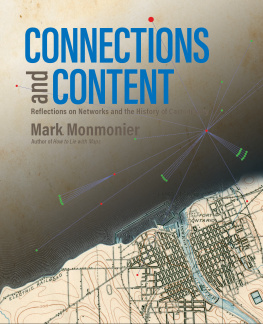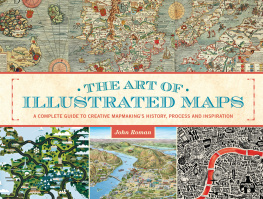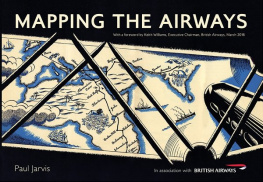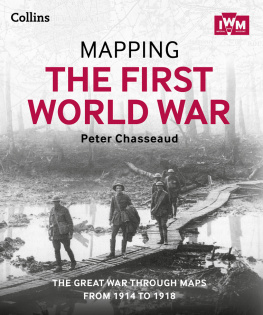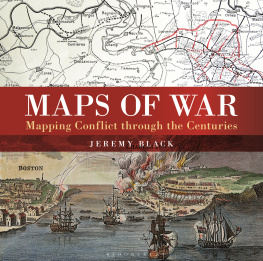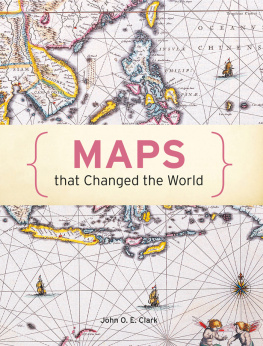MAPS THAT
MADE HISTORY


MAPS THAT
MADE HISTORY
The influential, the eccentric
and the sublime
LEZ SMART

To my family: Jenny, Joseph, Holly and Harry
Lez Smart 2004
This edition of Maps That Made History is published by arrangement with
The National Archives, UK.
The right of Lez Smart to be identified as the Author of this Work has been asserted by him in accordance with the Copyright, Designs and Patents Act 1988.
All rights reserved. No part of this publication may be reproduced, stored in a retrieval system, or transmitted in any form or by any means, electronic, mechanical, photocopying, recording, or otherwise (except for brief passages for purposes of review) without the prior permission of Dundurn Press. Permission to photocopy should be requested from Access Copyright.
Library and Archives Canada Cataloguing in Publication
Smart, Lez
Maps that made history : the influential, the eccentric and the sublime / Lez Smart.
ISBN 1-55002-562-7
1. Cartography History. 2. Maps Facsimiles. I. Title.
GA201.S62 2005 | 912'.09 | C2004-905783-9 |
1 2 3 4 5 08 07 06 05 04
Jacket illustration: a chart of the British Isles from John Sellers Atlas Maritimus, first published in c. 1678. John Seller (c. 1630-1697) was the first Englishman, in England, to compete with the Dutch as a producer of world marine atlases. Although as a nonconformist he was found guilty of conspiring to kill King Charles II, he was reprieved, and became Royal Hydrographer in 1671. He ran a nautical chart business from a shop near the Tower of London, and was also an instrument and globe maker. He published one of the first series of playing cards featuring world maps.
Frontispiece: Departure from Lisbon, by Theodore de Bry (see ).
).
).
Editorial, design and production by The Book Group, Somerset
Printed in Slovenia by MKT PRINT
Dundurn Press
8 Market Street, Suite 200
Toronto, Ontario, Canada
M5E 1M6
Dundurn Press
2250 Military Road
Tonawanda NY
U.S.A. 14150
www.dundurn.com
Contents


Preface
Im not absolutely sure when I first became aware that I found maps fascinating. I think it was probably on family holidays when I was a child. Each year our family made its way across Leicestershire and Lincolnshire in a small car to the east coast holiday town of Mablethorpe. As the eldest child I was charged with the responsibility of reading the map and advising my Dad as to the correct route. This invariably took the form of identifying the next place we should come to, calling it out as we reached it and then identifying the next one. Most of these places were tiny villages with wonderful names such as Frisby on the Wreake, Waltham on the Wolds, Tattershall and everyones favourite, Maltby le Marsh the reason for the popularity of the latter arising from the fact that it meant we were almost there! I remember wondering who had given these places their names? Why did Maltby have a French name? Why had they made the streets so wiggly (very much a Leicester word)? I didnt just want to use the map, I wanted to know more about it, the places on it and the people who had made it the way it was. Although I didnt realize it at the time the asking of these questions was the beginning of a lifelong fascination. As my bookshelves and the walls of my house bear witness, the writing of this book is just one manifestation of this interest.
In the process of writing it I have examined maps in the hushed Map Rooms of the National Archives and the British Library maps and locations far removed from the crumpled road atlas of the East Midlands flattened out on the dashboard of a Ford Popular. And yet the questions asked of these often unique and priceless maps was not that dissimilar from my questions as a child. Who made this map? Why did they make it? When did they make it? Why did they decide to give that name to that place? What does that line/symbol mean? How did they know it looked like that?
These, and further questions, are the ones asked in the following pages. As will be seen, sometimes the answers can be ascertained, sometimes they have to be surmised and sometimes we just dont know. And thats why they continue to fascinate.
Lez Smart

Acknowledgements
Without the persistence and tenacity of Sheila Knight, Deputy Publishing Manager at the National Archives, this book would not have been written. Id like to thank her for seeing the potential behind the ideas we discussed at out first meeting and being supportive all the way through.
Thanks are due to Paul Johnson and especially Hugh Alexander who form the National Archives Image Library team. Their suggestions and advice were invaluable. Thanks also to Jenny Speller whose painstaking work in tracking down permissions to use formed one of those vital but unsung tasks. Thanks to all at The Book Group for their editorial and design contributions.
However, my major thanks must go to my wife Jenny. Her unflagging support for this project and her willingness to listen to my enthusiastic account of yet another obscure detail from an equally obscure map was beyond the call of duty. Thanks Jen.
Finally, a word of thanks to Harvey for taking up his position under the desk each day with never a complaint.

).
Introduction
We need maps. We have always needed maps. We always will. The marks found in the caves of our ancestors have been interpreted as maps and every society that has existed throughout history, in every corner of the globe, has created its own maps. They form one of the ways by which each society has sought to represent, record and communicate its world.
While the scale, size and detail may vary all maps show the relationship between one place and another. They include the details that are, or were, deemed significant and omit the ones that are or were not. No map has ever, nor can ever show everything.
When faced with a map most people will immediately seek to identify a reference point from which to start: Theres our street; I went there for my holiday; Your grandmother was born there or even One day Im going to go there. This is perfectly natural because it is essential to get ones bearings and establish a point from which to make sense of the information on the map.
This ability to read a map is part of a skill known as visual literacy and involves being able to make sense of symbols, images and colours either alongside or in the absence of words. This literacy was present in the earliest humans, and has continued through the ancient civilizations into modern times. It is no less important a skill to possess than reading and writing. As the evidence from the earliest cave markings to the maps drawn by children showing their way to school illustrate, the ability to make and use maps may be a natural skill rather than a learned one.


